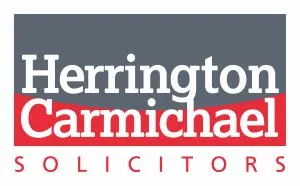SEIS and EIS are government initiatives that encourage private investors to invest in fledgling UK businesses. They're designed to reduce the risk that comes with investing in any early-stage company by giving investors generous tax breaks.
Put simply, these schemes are designed to help your company raise money by offering tax reliefs to individual investors who buy new shares. Generally, SEIS is for newer companies just starting out whereas EIS is for the growth phase of a business. Both reliefs are valuable to investors and whilst SEIS attracts higher tax reliefs than EIS, EIS allows significantly higher investment which reflects the stage of the company's growth.
SEIS/EIS investments benefit from tax reliefs that incentivise taxpayers to make what might otherwise be considered high-risk investments. What isn't always appreciated is that the complexity of the tax rules themselves and getting things wrong could also be considered high risk.
Risks
There are various areas which need to be considered to check if an investment will qualify for tax relief. Some relate to the date of investment, whilst others continue during the investment period. Often different investment opportunities will also bring their own nuances which mean they need to be carefully thought through to ensure they don't get caught by the rules detailed in the tax legislation.
The complexities with the rules are perfectly highlighted with the recent judgment in Kalay [2024] TC 09155. In the case, the First-tier Tribunal (FTT) upheld HMRC's application to strike out the taxpayer's appeal against HMRC's decision to refuse a late claim for enterprise investment scheme (EIS) relief and against a closure notice that denied EIS disposal relief on the shares that were the subject of the late claim.
In September 2013, Mr Kalay (the appellant) was issued with shares in a company known as 'People Apps Ltd'. He sold all of the shares in November 2019. His 2020 self-assessment (SA) return included a claim for EIS disposal relief in respect of the shares and HMRC opened an enquiry into the return in October 2021. In January 2022, a late claim for EIS income tax relief for 2012–13 was made within the 2020 SA return and this was rejected by HMRC. The appellant appealed against the refusal of the (late) claim (it was common ground between the parties that the latest date for a valid claim was 31 January 2020) and against the closure notice for the 2020 return (which denied EIS disposal relief). HMRC applied to strike out the appeal on the grounds that the FTT does not have jurisdiction to determine a late claim for EIS income tax relief and that the appellant's appeal against the closure notice had no reasonable prospect of success.
In 2013 the taxpayer invested in a company and received shares. In November 2019 he sold the shares. The following November he submitted his 2019-20 tax return and included a claim for enterprise investment scheme (EIS) relief on the disposal of the shareholding in the return. However he had not made a claim for EIS income tax relief for the 2012-13 tax year so he submitted a late claim in January 2022 (this should have been done by 31 January 2020 per ITA 2007 s 202(1)(b)).
HMRC issued a closure notice rejecting the claim and also denying the EIS disposal relief claim because the taxpayer had met the conditions – one of which was to have claimed EIS income tax relief. The taxpayer appealed.
The incontrovertible fact in the appeal was that the time limit for the EIS income tax claim had not been met. As TCGA 1992, s. 150A only allows EIS disposal relief in respect of shares to which 'an amount of EIS [income tax] relief is attributable',
Conclusion
It is a common misconception that EIS disposal relief is available for shares that are eligible for EIS income tax relief, whereas TCGA 1992, s. 150A in fact refers to shares to which EIS relief is attributable. Per ITA 2007, s. 201, references to 'EIS attributable to any shares' are to be read as references to 'any reduction made in the individual's liability to income tax that is attributable to those shares ...'. Thus, as illustrated in Ames, if no income tax reduction has been made, EIS disposal relief does not apply.
The content of this article is intended to provide a general guide to the subject matter. Specialist advice should be sought about your specific circumstances.


